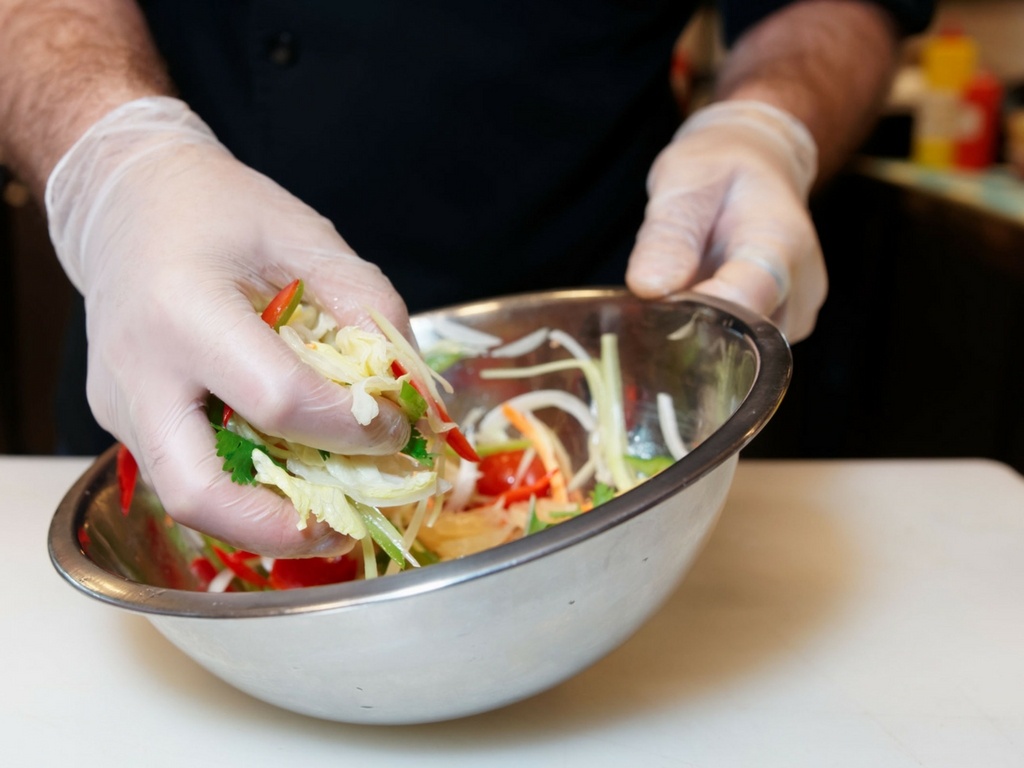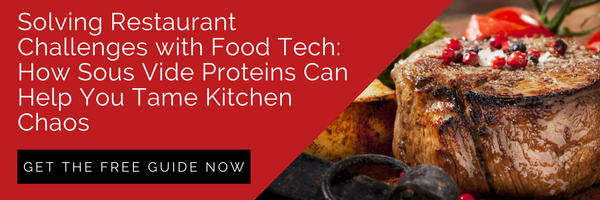
The very heart of a restaurant, regardless of market segment, comes down to two things: maintaining momentum and pleasing customers. Restaurant operations staff should consider these the primary goals at every single level of planning and implementation. Essentially, if it doesn't keep the restaurant moving forward or make customers happy, or if it does one at the detriment of the other, it should read as a signal that it’s time to stop, assess and fix. If moves that don't serve these goals are pushed through anyway, the negative impact on your success and restaurant safety procedure adoption isn't far behind.
How to Focus on: Food Safety
Consider the "journey" your food makes, en route to the kitchen.
Imagine food safety as a bubble, with outside influences constantly working to pop it. Things like lack of temperature consistency and long waits between when deliveries arrive and when they are placed in your chillers or walk-ins can allow bacteria or pathogens to breed. an issue that might not become apparent until a patron is ill.
Have a rigorously enforced procedure for handling deliveries to ensure that foods are properly stored as soon as they come in. Make sure that you meet — or ideally, surpass — temperature requirements in all of your food storage cases and consider adding moisture or light indicators in dry ingredient storage as well. Consider investing smart device apps that let you manage and view food storage temperatures simultaneously.
Drive home best practices in prep areas and spot check frequently.
It's human nature to let diligence slip after periods of repetition, so it's important to follow up with your staff to make sure they're still embracing food safety practices, weeks and months after training events or orientation. Glove changes, proper hand washing procedures and cross-contamination caution are of utmost importance in busy kitchens, but without oversight, these are often the first protections to fall by the wayside in lieu of speed.
Have a "What If" plan ready.
While you can control just about everything within your kitchen, you have no real knowledge or control of your ingredients prior to their arrival. Food outbreak scenarios can happen no matter how careful you are. The best way to avoid a total loss of customer faith is to assume responsibility before you are forced to. Discuss and agree on a response plan with your staff — how to isolate problematic foods during a recall, if they should be disposed of or kept and labeled in a certain way, how they should disinfect potentially contaminated areas and so on. Every kitchen staff member should have access to this plan, so for clarity's sake, it's best if it's written down and posted someplace prominent.
How to Focus On: Food Quality
Ask your raw or semi-processed ingredient suppliers for best practice guidelines.
If you're storing and using your ingredients the right way, the taste they offer is naturally going to be the best. It's rare to find a chef or kitchen staff member that knows best handling practices for every ingredient with the same depth that a manufacturer would, so count on supplier guidelines to make sure you're on the right track.
Emphasize consistency in preparation.
Using the same cookware, the same heat and the same time for popular recipes will ensure that every batch is equally amazing. Don't try to take shortcuts if you already have a menu favorite selling hand-over-fist. Your customers will be quick to spot (and call out) and deviation from the tried-and-true prep.
Pay attention to customer comments.
Beyond basic comments about food temperature or overall taste, is there a star ingredient that's frequently praised? A seasoning that seems to disappoint? Your customers are your best source of information on food quality, so use the data they typically offer freely to adjust your back-of-house prep and procurement in the food supply chain.
Using these tips for your restaurant operations will help you stay focused on the only two goals that matter: one for your business, and one for your growth. Food safety naturally informs safety for profits and longevity in the often-volatile restaurant industry, and in an era fraught with food scandals and ethical sourcing obstacles, that stability is the best dish your establishment can serve up.






